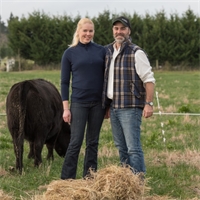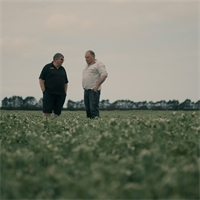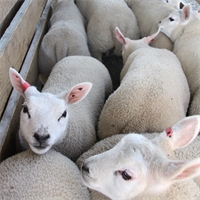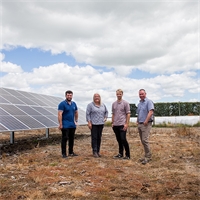28Feb
Agronomy Update Autumn 2022
Words supplied by Craig Rodgers, Ruralco Group Manager On Farm Sales
Autumn is on its way following a summer that had everything from extreme temperatures to deluges of wet weather and higher than normal humidity levels. This has meant very unfavourable conditions for the harvest with, at time of writing, there still being ryegrass on the ground awaiting longer periods of sunnier weather for drying and harvesting. While conditions have been good for pasture growth, dairy farmers have been unable to make up the production deficits from the spring, the only shining light being the season is well set up for milking to the end of May. With the days starting to shorten we are seeing some overcast mornings and with the bulk of the cereals still to be harvested, it is looking like the harvest will be drawn out this season.
Cultivation and drilling of pasture and autumn sown crops are underway. As long as the sunshine hours and soil temperature remain positive, these crops should establish well.
Pasture
The warmer and wetter weather through the summer has seen pastures perform well in general. The soil temperature has remained at optimal levels meaning consistent grass growth. There has been a surplus of grass throughout the summer and re-grassing programmes have continued throughout this period. Older pastures have struggled on the extreme hot days and as they thin out, older types and weeds return in the gaps. This is a good time of year to identify paddocks for your re-grassing programme and these decisions should be made around production at key times of year to suit your farm. Selection of cultivars is also important and while there can be a variation in price, the latest updated release of the Forage Value Index is a great guide to selecting the grass that will produce best when you need it to. Most new pastures will look good in the first couple of years, but persistence is where you get the greatest value. Cropping rotations also need to be considered as some short-term grasses can produce some very good yields and give paddocks a break from crops. While most grasses are bred to produce good yields in suitable conditions, it has become obvious that not all grasses suit all farmers or the management style you may have on your farm. Establishment is also important, ensure a good spray programme is in place to remove any competition prior to drilling and once the pasture has struck.
Cereals and Grain
Only some dryland cereals had been harvested at the time of writing with mixed results. Most cereals had been set up nicely through the late spring and early summer, but with the addition of the regular rain there is a risk of grain sprouting. Like previous years there is a wide range of screenings across samples, especially for Barley.
Grain prices have eased slightly for the harvest period, but it is hard to get a gauge on the actual price with many trades happening between farmers and direct off the header. Grain enquiries have been high, but demand has been minimal due to feed surpluses in some areas and a reduction in stock numbers. Once again, we await results from some new varieties that entered the commercial market over the past year and while some weren’t available on the open market, FAR will be updating results from trials to see if they can consistently perform over a period.
Grass Seed & Clover
While most harvested crops are currently being dressed, there has been mixed yield results for grass seed yields across a variety of areas. We don’t have any early confirmed test results yet but it will be interesting if the late frosts in spring have had any effect on quality. Pricing has held up over the latter part of last year, and demand remains high especially for Nui.
The clover harvest has not commenced but feedback is that crops have struggled due to the wetter weather with too much growth and bulk through the early summer, therefore they have struggled to set seed heads. The lack of consistent hot weather in January and February has not helped and it will be interesting to see what yields are secured if the weather plays its part in March. The commodity clover price has been very dormant of late but still sitting at a good price currently.
Fodder Beet
Fodder Beet crops are looking pretty good and have responded to the regular rains and the very hot days through summer. At this stage they seem on track with the previous seasons, however some were slow to get going due to the late spring but have responded well to Urea applications. Crops have stayed greener than usual, and most leaves have been protected. As the days get shorter and cooler, the bulb will continue to develop in size. While it is too early to estimate yields, it will be interesting to see how the earlier grazed crops perform. Some farmers are looking to transition and feed as early as April and we may see some variation across paddocks from commencement to the end of grazing as the crop continues to grow in April, May and June. Performance of varieties remains a good talking point and we will hear the usual yield estimations over the coming months, however the best way to get an accurate as possible yield calculations is to use an independent feed assessor, even if the crop is for your own use. This will help the transitioning process and welfare of animals in the early grazing stages.
Catch Cropping
We have noticed an increase in inquiry for oats and other catch crop products following winter grazing, and the harvesting of crops in a period where historically we have left ground fallow.
Catch crops are used to cover the fallow ground and take up the urinary N deposited during winter grazing, reducing the risk of nitrate leaching. The use of catch cropping is a valuable tool to aid farmers to meet new requirements with environmental rules that are currently being implemented throughout the country.
Recent research from Forages for Reduced Nitrate Leaching (FRNL) and Pastoral 21 (P21) have shown dry matter (DM) production can be significantly increased at a lower cost per kg/DM while decreasing the amount of leachable N. One study has shown that by sowing catch crops such as oats following winter crop grazing, nitrogen losses have been reduced by up to 49% compared to leaving the ground fallow. The magnitude of this effect may vary depending on crop management, the chosen catch crops performance, soil type and seasonal weather conditions.
Related

Neil Bateup, has witnessed some drastic changes to his rural community over the past 30 years, chang...
Read More

What do Lowline Angus cattle, Suffolk sheep, Argentine barbecues and academia have in common? They r...
Read More

Empowered by a desire to leave the dairy industry better than they found it, Carew dairy farmers and...
Read More

For the next three months we will look at the following: fodder crops, pre-emergence sprays on autum...
Read More

At a time when sheep numbers are at an all-time low and amid continued decline in industry confidenc...
Read More

Ruralco has partnered up with Canterbury based solar energy company Platinum Energy to provide farms...
Read More